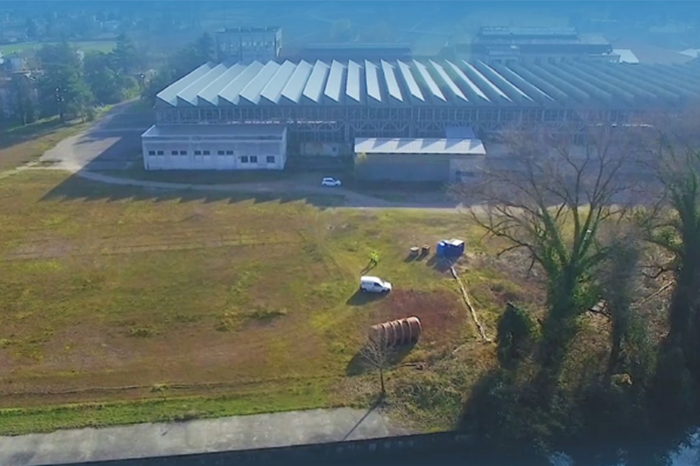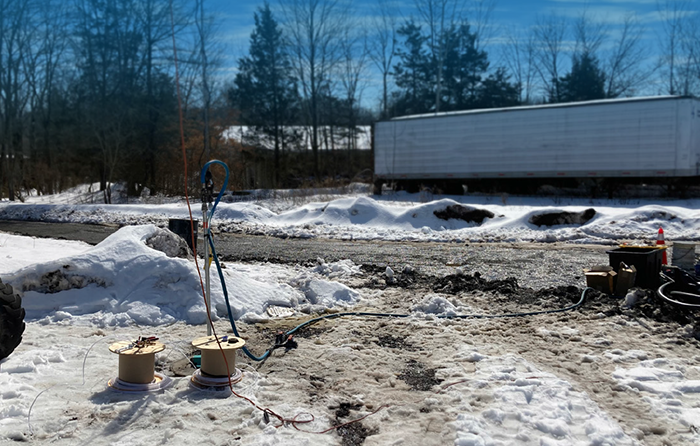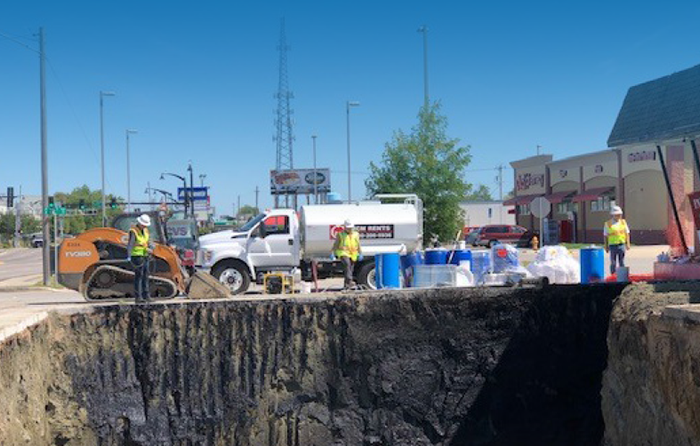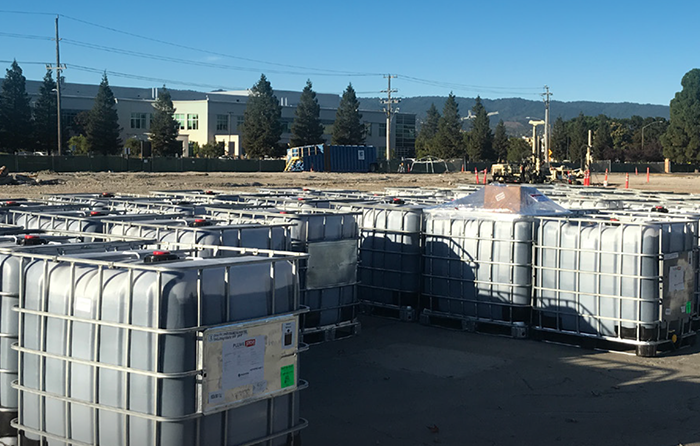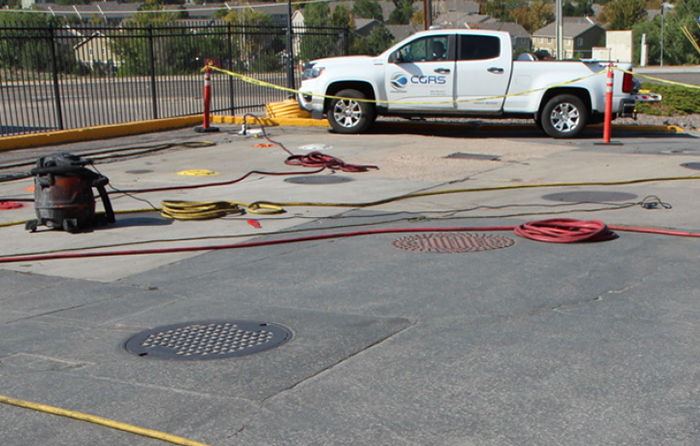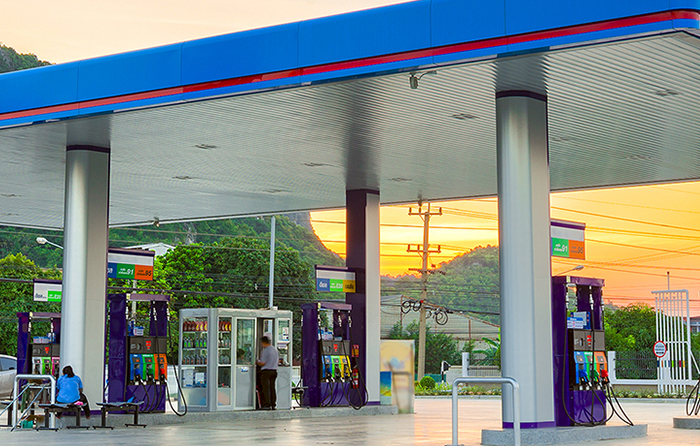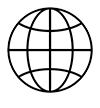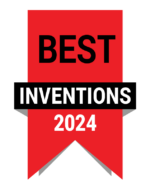DNAPL to Non-Detect: 6 Orders of Magnitude Reduction of Chlorinated Solvents
Case study highlights:
- Extensive chlorinated solvent contamination on a complex site was remediated using in situ treatment, including Enhanced Reductive Dechlorination (ERD) and a PlumeStop injectable Permeable Reactive Barrier (i-PRB).
- High-contamination areas saw significant reductions in chlorinated solvents, including potential Dense Non Aqueous Phase Liquid (DNAPL).
- A combination of sorption and ERD technologies achieved and maintained very low contaminant concentrations, meeting strict regulatory requirements and allowing for site closure.
Combined in situ sorption and biological degradation leads to site closure of large manufacturing site in Northern Italy. Chlorinated solvents were used for many years at a former manufacturing facility in Northern Italy. This resulted in contamination of the groundwater underlying a large proportion of this 60,000 m2 site. Groundwater concentrations of up to 155,000 μg/L TCE meant there was a suspected presence of Dense Non Aqueous Phase Liquid (DNAPL) on parts of the site. The contamination posed an unacceptable risk to both on- and off-site receptors and it was determined that active remediation was required on a large proportion of the site.
PFAS Removed from Aquifer at Hazardous Site Where AFFF Was Used
Case study highlights:
- Total PFOS and PFOA reduced from 91,400 to <50 ng/L in one month
- Injection testing effectively used for design confirmation in PlumeStop PFAS remediation pilot study
- Application included innovative injection using straddle packer system to isolate vertical zones
This case study reviews a Pennsylvania Hazardous Site Cleanup Act (HSCA) project where aqueous film-forming foam (AFFF) extinguished a large fire in the 1980s was the target of an innovative pilot study to address per- and polyfluoroalkyl substances (PFAS). Working closely on behalf of the PADEP, Tetra Tech, a leading provider of consulting, engineering, and technical services worldwide, was principally involved in assessing the options and choosing a technology for the pilot test. This effort led to the decision to conduct a pilot study using PlumeStop®, a patented colloidal activated carbon amendment known to eliminate the risk of PFAS. In 2016, a public supply well in the area was found to contain combined concentrations of perfluorooctanesulfonic (PFOS) and perfluorooctanoic acid (PFOA) exceeding the Environmental Protection Agency’s (EPA) 70 parts per trillion (ppt) Health Advisory Level (HAL). Another public supply well was found to contain combined concentrations slightly below the HAL. Upon notification, the affected wells were taken offline and PADEP immediately investigated the surrounding area. The subsequent investigation revealed that PFOA and PFOS had impacted groundwater, resulting from the chemicals contained in the spent AFFF migrating through the surficial soils and underlying fractured bedrock at the site. In addition to the public supply wells, several potable drinking water wells in the area extracting groundwater from the bedrock aquifer were affected. Filtration systems were promptly installed on the affected domestic wells. With the immediate threats to drinking water addressed, attention turned to strategies that could prevent the further spread of PFOS and PFOA from the source area.
Injectable Permeable Reactive Barrier Stops MTBE and Benzene Plume
Case study highlights:
- Pilot test proves injectable permeable reactive barrier (i-PRB) successful at reducing MTBE and benzene
- Technologies used: PlumeStop and ORC Advanced
- Monitoring data includes sampling event at 27 months post-injection
- Full-scale treatment scheduled
Fuel losses at a former petrol filling station in western Belgium, had resulted in the contamination of soil and groundwater with petroleum hydrocarbons and oxygenate additives. During the decommissioning of the site the source area was remediated, however a residual groundwater plume was left in place. Having taken over the site from the previous owner, OVAM determined that this plume represented a potential environmental and human health risk. OVAM required active remediation to take place and Group Van Vooren worked with REGENESIS to develop a suitable strategy. Read the case study to learn more about this site, the remediation approach taken and the results achieved from the pilot test.
Eight UST Sites Closed or On-Track for Site Closure using PetroFix
Case study highlights:
- Case studies of eight UST sites closed or on-track for site closure using PetroFix, including contaminants treated, approach, remedial design and results
- Antea Group applied PetroFix using in situ application methods which included direct push injections through grid and barrier arrays and excavation emplacement
- Why Antea Group readily adopted a promising new remedial amendment for site closures
This multi-site case study reviews eight underground storage tank (UST) sites where the leading global environmental consulting firm Antea® Group has closed the site or positioned it to be on-track for closure using PetroFix. Antea Group is amongst the first environmental consulting companies to recognize and adopt PetroFix as a tool to rapidly reduce PHC impacts and achieve remedial objectives in groundwater. Applying PetroFix with economic efficiency, the company successfully advanced a portfolio of legacy UST release sites through the closure process over a short timeframe. In this effort, Antea Group sought and obtained approvals through multiple state regulatory agencies, self-completed the designs to determine dosing and injection layouts, implemented PetroFix treatments using different in situ application methods, and conducted performance monitoring to demonstrate remedial objective attainment.
PlumeStop Application Paves The Way For Redevelopment
Case study highlights:
- Design Verification Testing (DVT) from REGENESIS contributes to achieving remediation goals
- Flux-based predictive modeling used to optimize remediation to meet two-year timeline
- Highly successful remediation solution using colloidal technologies paves the way for property redevelopment
This case study reviews a contaminated chlorinated solvent site in northern California where advanced design verification testing and predictive modeling methods were used to guide a remarkably successful in-situ remediation effort. Complete reduction of chlorinated volatile organic compounds (CVOCs) in the treatment areas and remedial objectives achieved allowed redevelopment of the property. The primary CVOC chemicals of concern were tetrachloroethene (PCE) and degradation products, trichloroethene (TCE), cis-1,2-dichloroethene (cis-DCE), and vinyl chloride (VC). PES Environmental, Inc. (PES) of Novato, California, was selected by the developer as their Environmental Consultant for this project. When PES engaged REGENESIS on this project, a better understanding of contaminant flux was needed. By understanding the contaminant flux, a cost-effective remediation plan could be designed, specifically engineered to achieve a project goal. In this case, the goal was to fully remediate the CVOCs in the target treatment areas within two years following application of the treatment approach.
PetroFix Applied to Active UST Basin, Quickly Meeting Cleanup Goals
Case study highlights:
- Innovative tank basin flooding method fully treats gasoline contaminants at active gas station site
- PetroFix was injected into the wells at a controlled rate with minimal pressure – just 3 PSI on average
- PetroFix is chemically compatible with the existing UST system on this site
This case study reviews an active gasoline station in Colorado where stained soils were discovered during the replacement of the underground storage tank (UST) spill buckets. After considering multiple options, CGRS, a leading environmental consulting firm, developed and implemented an innovative, low-risk, and highly cost-effective treatment program utilizing PetroFix® to address the groundwater contamination in situ. Contamination associated with this release was later confirmed within and adjacent to the UST basin with benzene, ethylbenzene, xylenes, and MTBE concentrations in groundwater detected above the Tier 1 risk-based screening levels. As a result of these groundwater impacts, further corrective action was warranted. The site and UST system where the release occurred is fully operational and groundwater contaminants were mostly contained within the active UST basin. However, some contaminants had migrated into the surrounding soils (predominantly clayey sand) and weathered bedrock (claystone). Consequently, a remediation approach was needed that would be minimally disruptive, chemically compatible with the active UST system, and highly effective.
No Further Action Granted, Allowing Site Redevelopment to Move Forward
Case study highlights:
- PetroFix rapidly reduces PHC contaminants to achieve closure goals and avoid future disruption and cost exposure
- EnviroForensics, an Indianapolis-based environmental consulting firm expert in developing site closure strategies, was contracted by the town to pursue regulatory closure
- PetroFix treatment eliminated the need for costly groundwater monitoring and unnecessary time and disruption to document plume stability
This case study reviews four orphan underground storage tanks (USTs) that were discovered at a former gas station site slated for redevelopment in a Southern Indiana town. Since the site was scheduled for redevelopment, it was necessary to eliminate future cost and disruption and demonstrate plume stability and Monitored Natural Attenuation (MNA) conditions. EnviroForensics was contracted by the town to pursue regulatory closure. Since the site was scheduled for redevelopment, it was necessary to eliminate future cost and disruption and demonstrate plume stability and Monitored Natural Attenuation (MNA) conditions. EnviroForensics decided to treat these low-level, residual impacts by injecting PetroFix® into the underlying groundwater. Following completion of the application design using PetroFix Design Assistant online software at www.petrofix.com/design, Enviroforensics mobilized to the site and completed the application in July 2019.
PetroFix Reduces Benzene 99% Positioning Site to Achieve Closure
Case study highlights:
- PetroFix is chosen as the final remediation solution to achieve site closure
- Low injection pressures maintained throughout the application
- With 99% benzene plume reduction maintained, the site is positioned to achieve closure status
This case study reviews a retail petroleum station with a petroleum hydrocarbon plume in groundwater originating from the UST pit and extending offsite across a roadway and onto another commercial property. After evaluating a range of remedial options, the environmental consultant CGRS specified PetroFix as the most economically feasible option to quickly remediate the benzene plume and achieve site closure. Prior to the PetroFix treatment, CGRS performed numerous remediation activities between 2003 and 2019, including, excavation, air sparge system pilot testing, soil vapor extraction, in-well oxygen diffusion systems, pilot and/or full scale injections of carbonbased and chemical oxidizing mixtures. The combination of these remediation activities substantially reduced much of the soil and groundwater contaminant mass over time. However, the overall magnitude and extent of the benzene plume persisted above the site closure objectives, prompting further remediation. CGRS worked directly with REGENESIS to design the in situ remediation.
PetroFix Provides Preventative Treatment for Pipeline Installation
Case study highlights:
- PetroFix prevents recurring contamination
- PetroFix application allows installation of new pipeline
- Spray application of PetroFix onto walls and floor of pipeline corridor post-excavation
This case study reviews a new underground pipeline that was to be installed across a complex chemical plant in southwestern Germany. It was found that part of the pipeline would intersect an area of soil and groundwater impacted with petroleum hydrocarbons and BTEX compounds. The impacted soils and groundwater in the immediate vicinity of the piperun would be removed through excavation and dewatering. However, residual contamination would be left in place beside and below adjacent existing structures, where excavation could not be progressed for structural/geotechnical reasons. The residual contamination in these soils represented an ongoing secondary source of contamination, which could diffuse and desorb into the groundwater and re-contaminate the excavated area. This could result in contamination of the clean backfill around the pipeline, plus the granular pipe-bedding material would provide a conduit through which re-contaminated groundwater could spread further across and potentially beyond the site.
No Further Action Achieved at Gas Station Site
Case study highlights:
- Collaboration between PPM Consultants and REGENESIS resulted in substantial cost savings while achieving the no further action goal
- REGENESIS Remediation Services implemented a highly-controlled injection program
- Following the application and subsequent monitoring, the treatment objective was met
This case study reviews a gasoline service station near the Mississippi River in central-eastern Louisiana that was contaminated with petroleum hydrocarbons (PHCs) detected in soil and groundwater. Further investigation phases were performed to define the magnitude and extent of the PHC plume, confined to predominantly fine-grained soils (i.e., silt and clay) in the upper 15 feet below ground surface (bgs). In 2015, PPM Consultants, Inc. (PPM) submitted a Corrective Action Plan (CAP) to the Louisiana Department of Environmental Quality (LDEQ) to remediate benzene (i.e., the primary PHC of concern), in soil and groundwater. In the CAP, PPM proposed an in situ chemical oxidation (ISCO) and aerobic bioremediation treatment approach utilizing PersulfOx® and ORC Advanced®. The ISCO to bio treatment approach was nearly 50% more cost-effective than the installation of either dual-phase extraction or ozone sparging systems, two possible approaches considered by PPM prior to determining the final remedy.

 Americas
Americas Europe
Europe Français
Français Deutsch
Deutsch Italiano
Italiano Español
Español